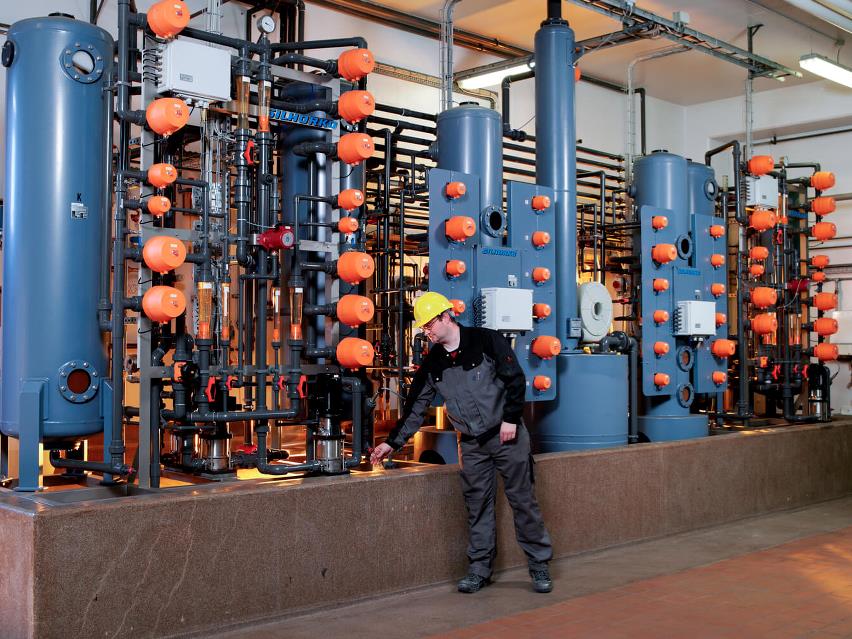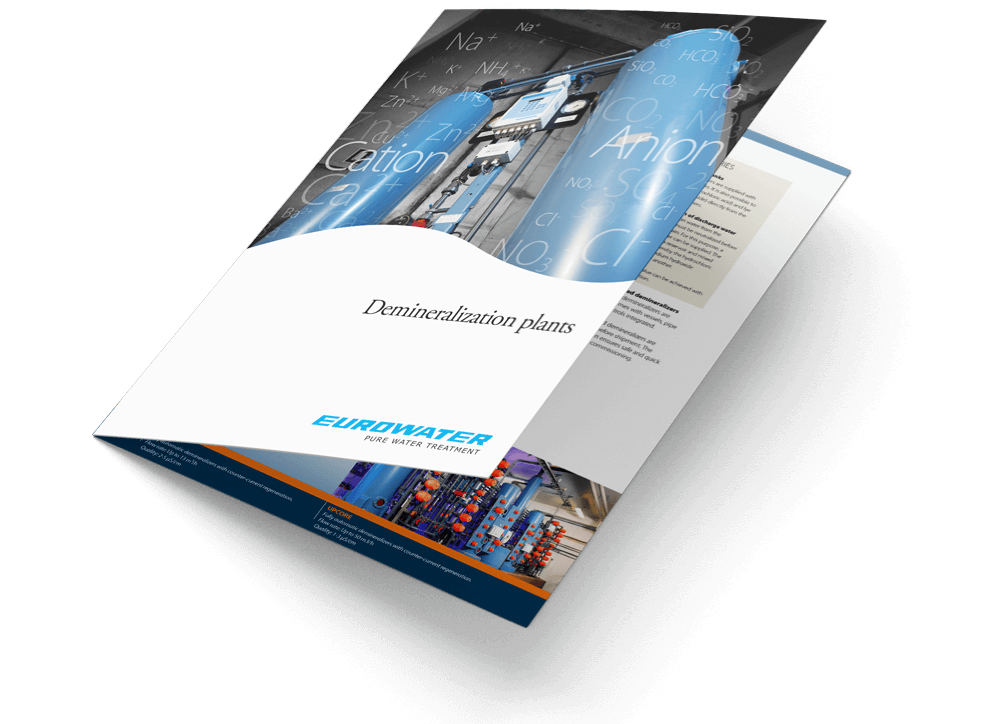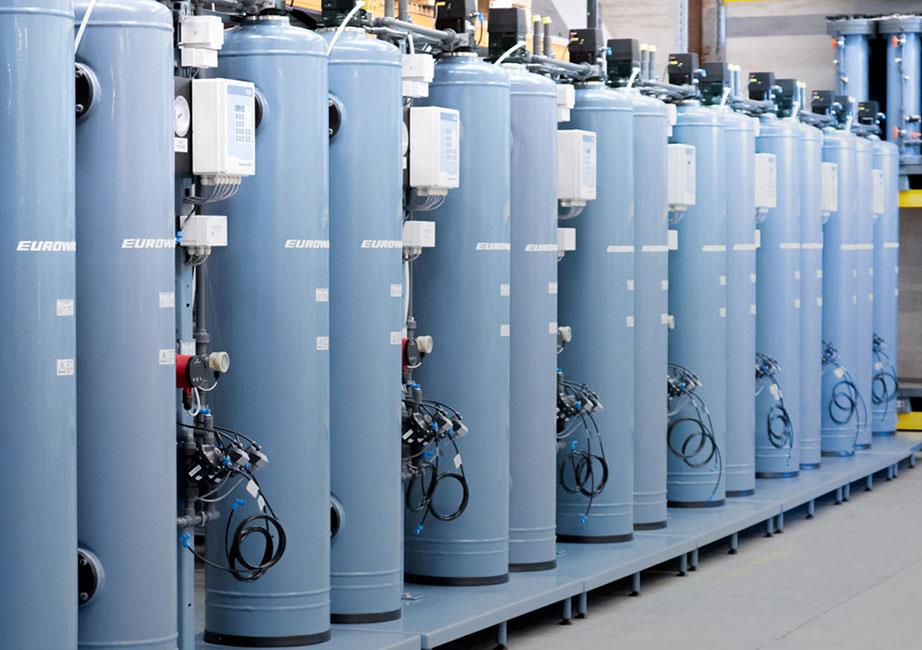
Demineralization plants
- without pretreatment
Demineralization is the removal of dissolved solids in the water through ion exchange. A demineralizer from EUROWATER requires no special pre-treatment of the inlet water to achieve demineralized water quality. The plants are used for many applications, including production of rinse water, process water, boiler water, and more.
The demineralization plants are two-column systems, where the water first passes through a cation exchange column and then next passes through an anion exchange column.
Where a demineralizer makes a difference
Surface treatment
Ion exchange demineralization used for recirculation of rinse water can reduce the amount of fresh make-up water needed. This is a sustainable solution to lower water consumption and even reduce production costs.
Process water
Demineralized water and steam are required especially within food industries. The water quality is important for the final product quality and food safety. The photo shows demineralizers used for gelatine production.
Boiler water
Demineralized water with low silica content used as make-up water for high-pressure steam boiler. Ion exchange demineralization can be the key to a trouble-free operation.
Product overview
Our product range comprises a wide number of standard plants, all engineered and manufactured in-house. The starting point is our modular-built standard system ensuring high flexibility, high reliability in operation, and short delivery time. Each solution can be customized and built according to the specific application by adapting the choice of material, instrumentation, and control system - based on our combined know-how.
Plant design
The demineralization plants are available with semi-automatic or automatic regeneration. Semi-automatic demineralization plants require manual deployment of regeneration while an automatic plant initiates the regeneration when the capacity of the demineralizer is exhausted.
Contact your local sales and service office for more information, data sheets and instructions.
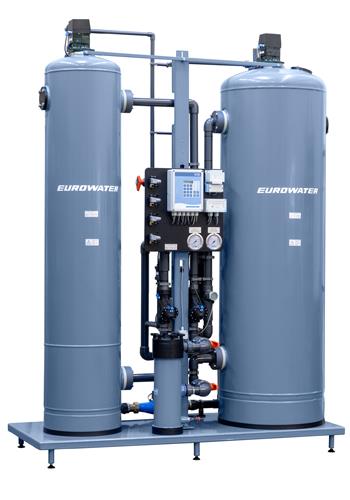
Automatic
counter-current
| Product type: | DMCE |
| Modules: | 3 |
| Flow rate up to: | 13 m3/h |
| Quality: | 2-5 µS/cm |
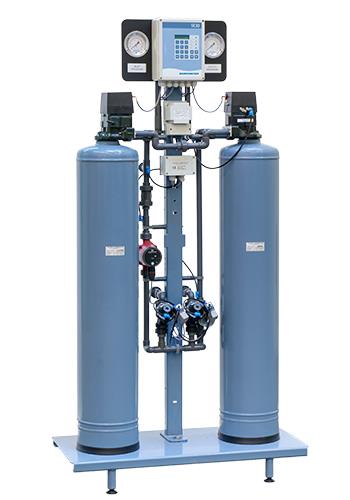
Automatic
co-current
| Product type: | DME |
| Modules: | 7 |
| Flow rate up to: | 5 m3/h |
| Quality: | 5-20 µS/cm |
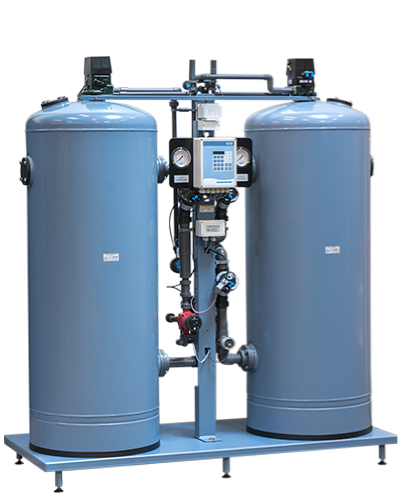
Automatic
co-current
| Product type: | DMHE |
| Modules: | 5 |
| Flow rate up to: | 20 m3/h |
| Quality: | 5-20 µS/cm |
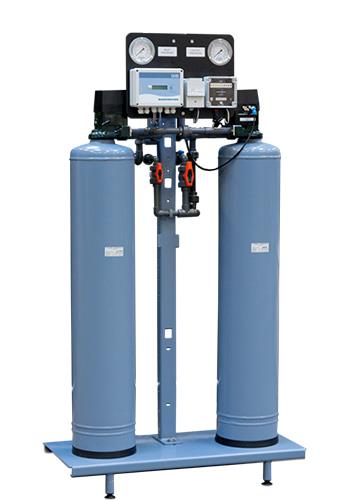
Semi-automatic
co-current
| Product type: | DMS |
| Modules: | 8 |
| Flow rate up to: | 5 m3/h |
| Quality: | 5-20 µS/cm |
High water quality and low chemical consumption with counter-current regeneration
With counter-current regeneration, the flow direction during operation and regeneration is opposite. This provides a more efficient regeneration which results in lower chemical consumption and water quality as low as 1-5 µS/cm. Automatic counter-current regeneration is available in our demineralizer series DMCE.
To utilize the system capacity in a balanced way and to optimize consumption of chemicals for the neutralization process, the cation column is often smaller than the anion column.
Contact us for data sheets or more information.
Contact your sales and service office
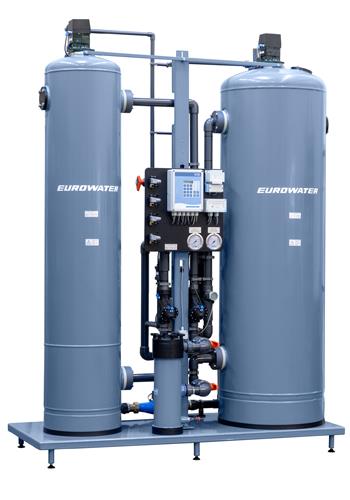
Reliable demineralization plants
Anti-corrosion tanks
The filter tanks are made of steel and can resist pressure fluctuations. They are also surface coated with PPA, a high-performance factory applied polyethylene coating. Thus, the filter tanks combine the strength of steel with the strong anti-corrosion properties of the PPA (C5-M).
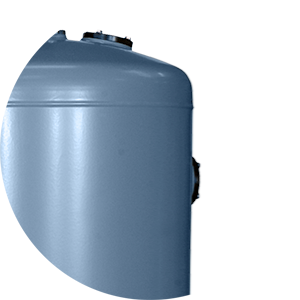
Fail-safe valve
Our patented five-cycle valve is designed especially for EUROWATER plants. It is made of high-quality synthetic material and has few movable parts. This ensures a reliable operation, long life, and minimum maintenance.

Pipe system
As standard, the supplied pipe system is of PVC and is resistant to corrosion and chemicals. All gaskets and O-rings are of silicone-free materials. The pipe system is also available in other materials such as PP and PVDF.

Standard control
Each demineralizer plant comes with a standard control panel. Our controls are purpose-made and individually programmed by our own control engineers.
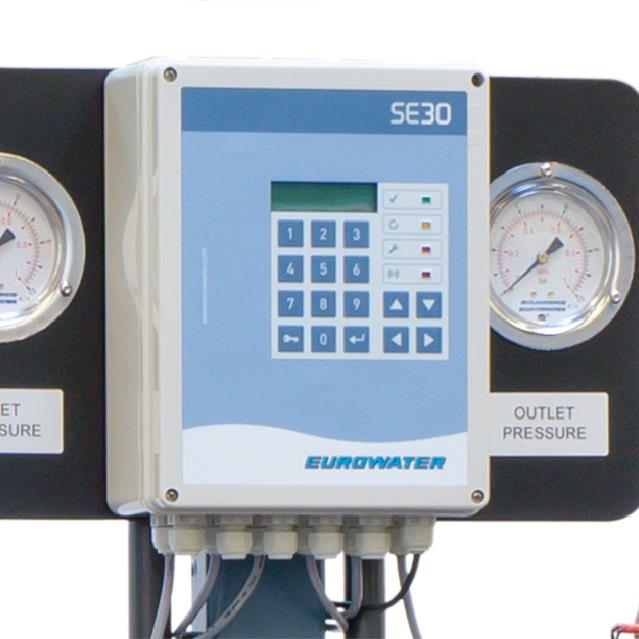
UPCORE for higher flow and self-cleaning units
Automatic demineralizers using the principle of UPCORE™ (UPflow COuntercurrent REgeneration) provides significant advantages:
- High flow rate: up to 70 m3/h
- High water quality: 1-3 μS/cm
- Low chemical consumption
- Constant, low pressure loss due to self-cleaning operating principle
Customized
IR-welded pipe system
This UPCORE™ solution is packed with special features for a safe and reliable boiler operation at a zinc production. The solution is designed for a flow rate of 2 x 37 m3/h.
PP-H pipe system
The pipe system is constructed in IR-welded PP-H. All welds are documented, both with a tag on the welding and a welding report.
Regeneration with sulphuric acid
The regeneration is done with sulphuric acid (H2SO4) and not hydrochloric (HCI) as normally used to regenerate demineralization units. The advantages of sulphuric acid is that it does not cause any problems with chlorides in the waste water. However, is does generate a lot of heat. A special flow transmitter and an ejector device of heat resistant PVDF are installed on the acid side of the unit.
Demineralized water with low conductivity
Mixed-bed plants are used for fine polishing of demineralized water. By treating demineralized water with low carbonic acid content, a conductivity of less than 0.1 µS/cm at 10°C can be achieved.

Learn more about the optimum demineralization solution
In this leaflet you get facts on the demineralization process and how to get the optimum solution.
See references with demineralization plants
Get the optimum solution
Selection of unit depends on application, water quality, and water consumption. We are at your service to ensure the optimum solution based on our combined know-how. Fill in the form and let us get back to you.



